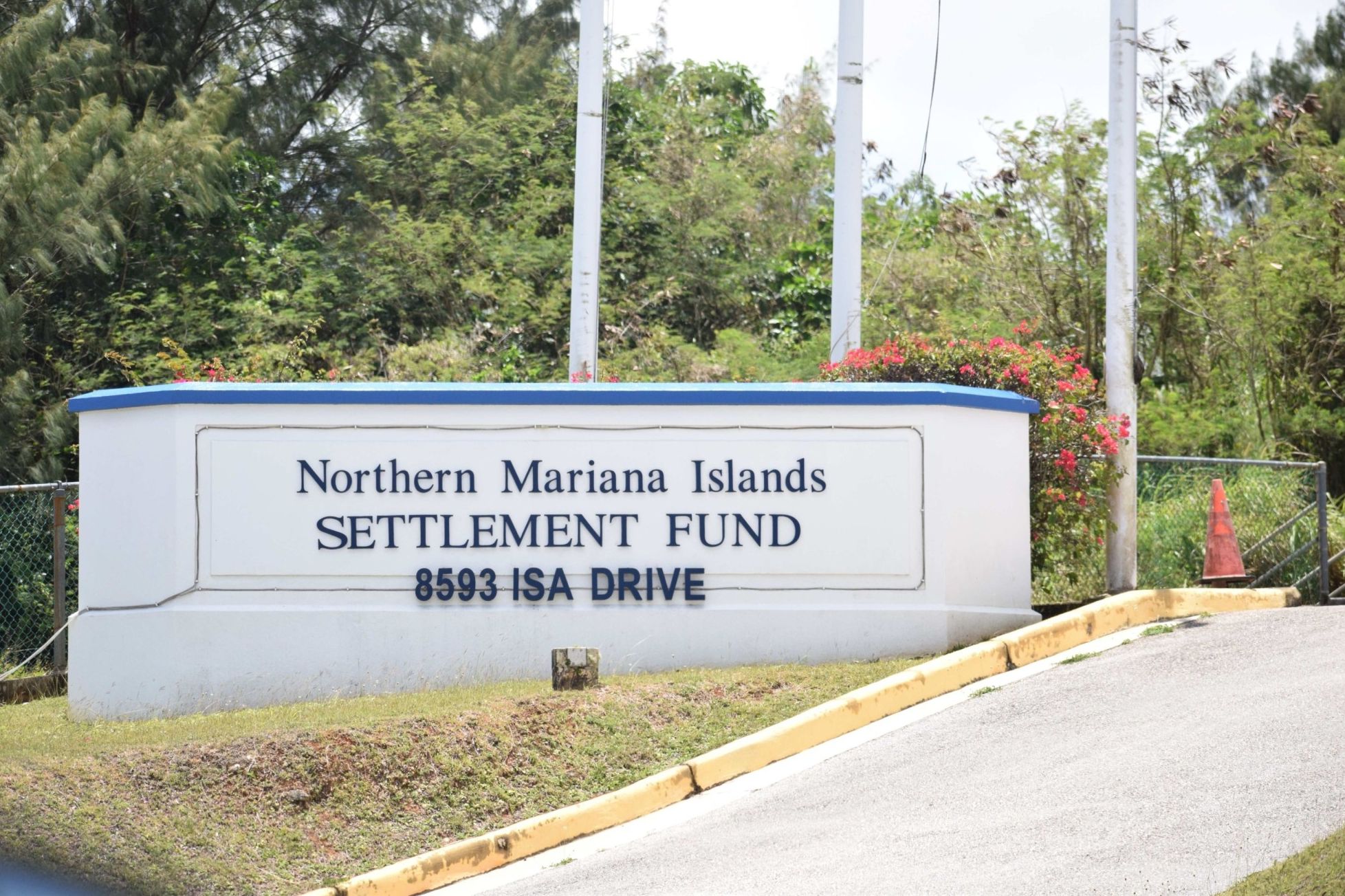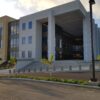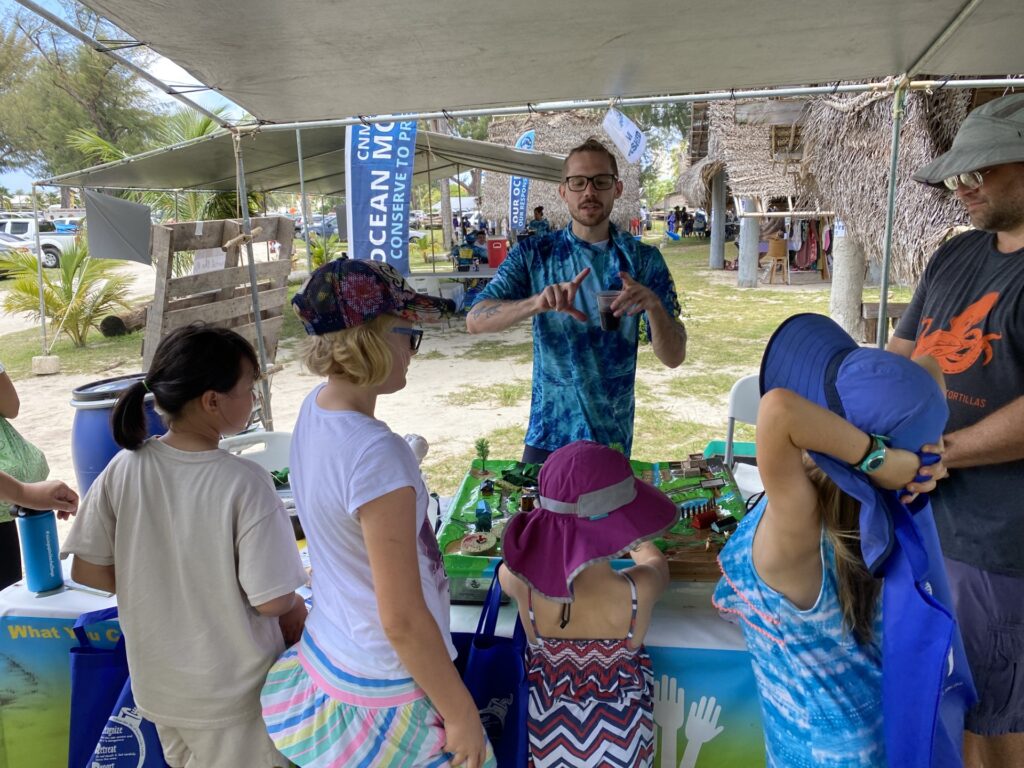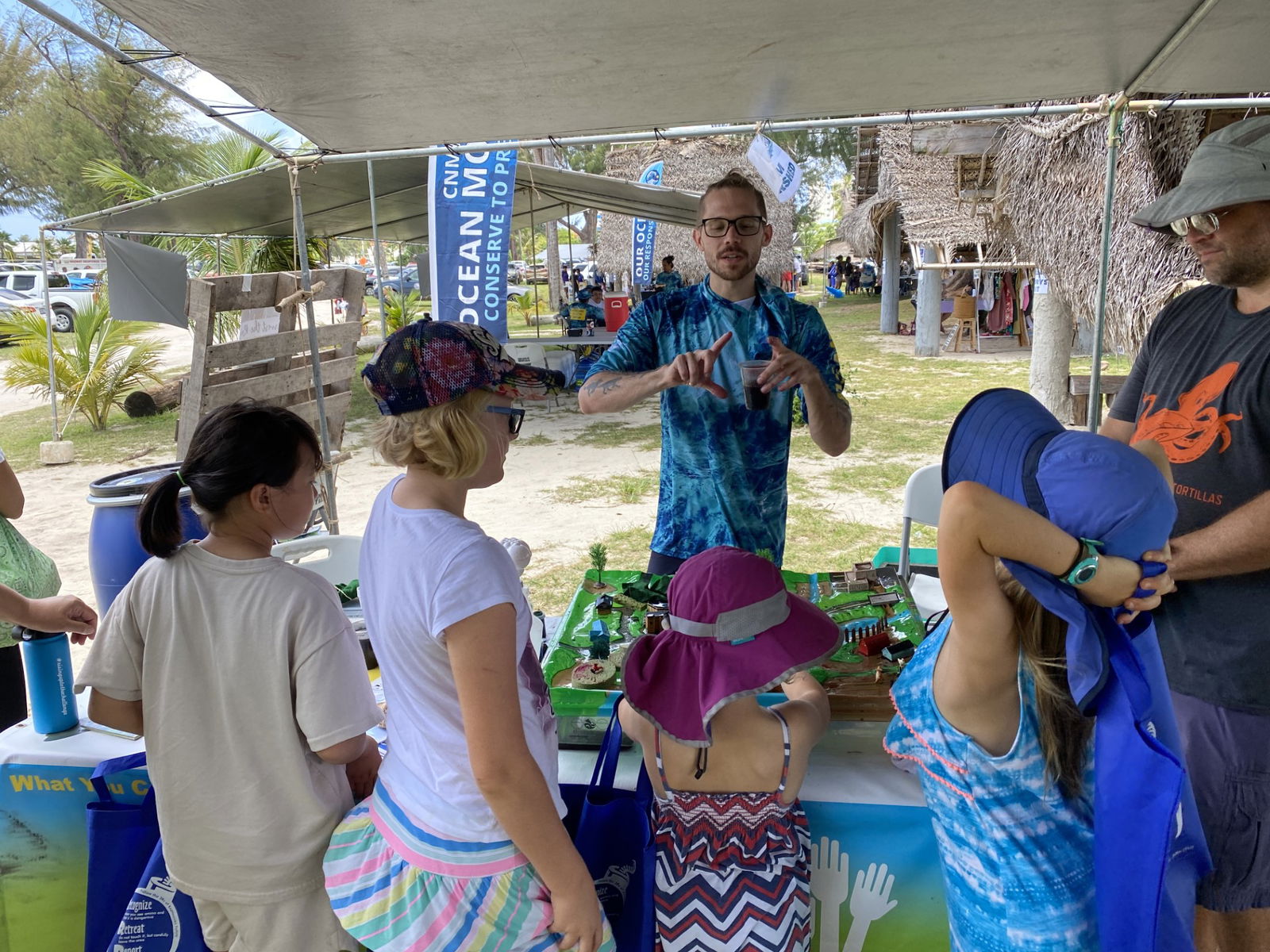
Zachary Williams makes a presentation for children at the Saipan Ocean Fair.

A mullet swims in an aquaculture tank at the Saipan Ocean Fair. In the lower tank, the fertilized water from the mullet tank is twice filtered so that seaweed can grow. The seaweed absorbs the fertilizer, and the clean water is circulated back to the fish.
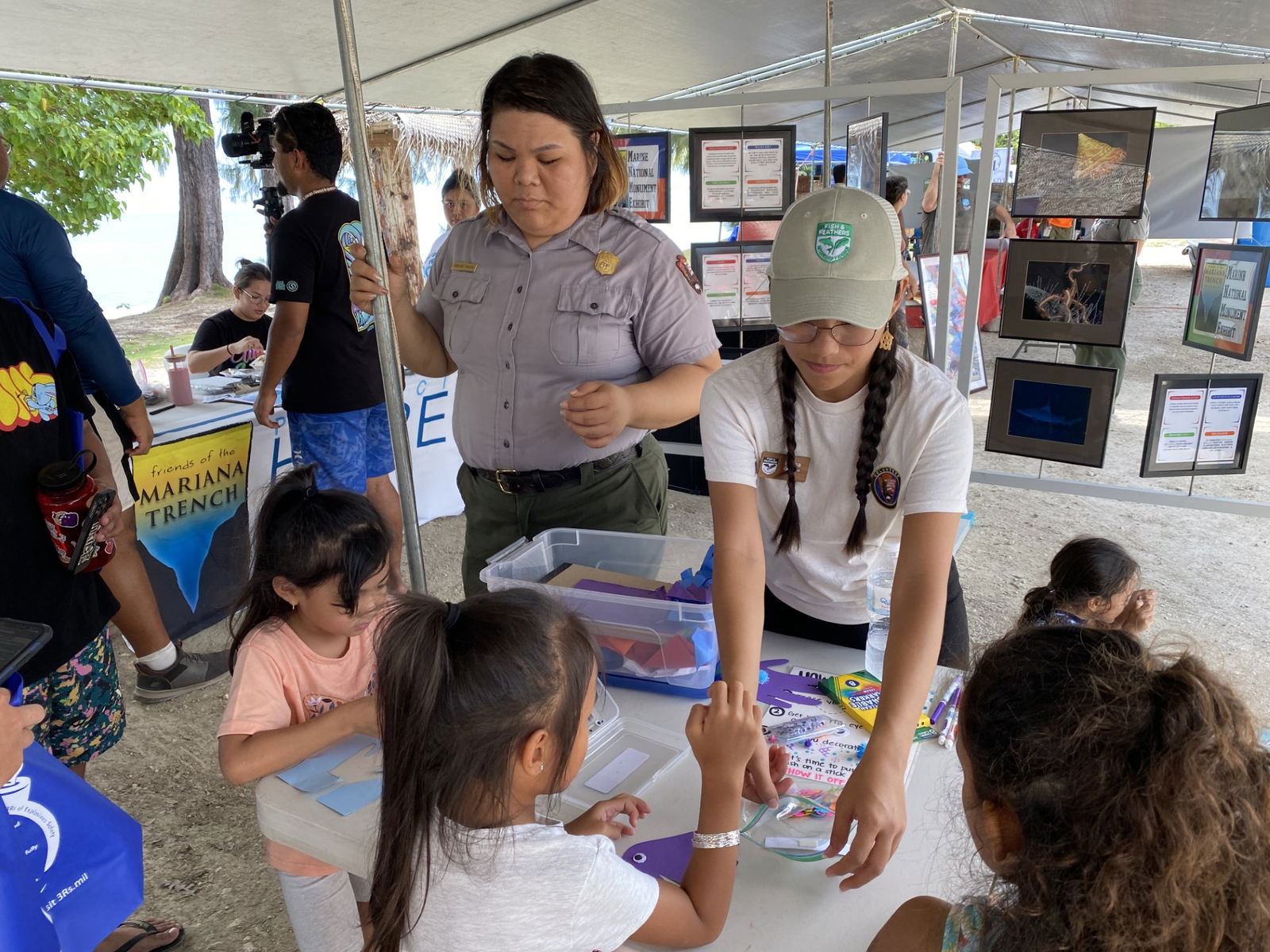
Children learn about the marine environment at Saipan Ocean Fair.
AT the Saipan Ocean Fair on June 17, dozens of booths and hundreds of people gathered to celebrate ocean conservation and environmental stewardship.
“The purpose of this fair is to raise awareness of the importance of our ocean,” said Colleen Flores, the Division of Coastal Resources Management’s communications coordinator and the event organizer. The ocean “offers jobs and is a food source to our community. The fair here showcases a lot of the work that goes into protecting and conserving our ocean and all the resources around our island,” Flores added.
Actions taken on land affect the ocean, Flores added.
“No matter where we are [on Saipan] we are in a coastal area. No matter if we’re on top of Mt Tapochau, what we do on land still affects our oceans. So, the fair also brings the connection between our land and our ocean.”
At the fair, which was held at the Civic Center in Susupe adjacent to the traditional huts and the 500 Sails Guma Sakman, DCRM hosted 15 educational outreach booths dedicated to environmental organizations.
There were also swimming activities for community members and pop-up booths from businesses that practice sustainable production methods.
One of the educational booths was dedicated to DCRM’s watershed conservation programs.
According to the website of the National Ocean Service of the National Oceanic and Atmospheric Administration, a watershed is a land area that channels rainfall to creeks, streams, and rivers and eventually to reservoirs, bays, and the ocean.
Zachary Williams is DCRM’s watershed coordinator. Variety spoke to him after he made a small presentation for children about how construction development can negatively impact the lagoon through the removal of vegetation. Williams used a model to show how trees, wetlands, and plants can act like sponges, soaking up rain and runoff before they get to watersheds. He said when construction does not take into account conservation of the environment, rain can carry pollution far away and eventually into the lagoon.
“Anytime it rains heavily on the islands we have a red flag event, at least on the lagoon side with a lot of development,” Williams told Variety at the end of his presentation. Through his outreach, Williams was hopeful that the community could take more steps to conserve the environment and protect the lagoon.
“Showing people how unique and important our environment is here, and how they could implement changes at home will inspire them to keep on protecting the environment,” Williams said.
Williams was happy doing outreach at the fair, saying he enjoys “opening people’s eyes to these really amazing unique resources which don’t exist anywhere else in the world.”
Alexandra Sinno, a NOAA Hollings Scholar, agreed that outreach is critical.
“Outreach in science is the most important part of science in my opinion,” Sinno said, after speaking to community members about the proper size specific reef fish must grow to before they can be harvested sustainably.
“If we’re doing the science and not showing it to anybody, what’s the point of science? Having people involved and knowing more about it just spreads awareness,” Sinno added.
Michael Ogo, the program leader at NMC-CREES’ Aquaculture and Natural Resource Program, was on site at the Saipan Ocean Fair to present how an aquaculture system is a clean way to eat fish, grow vegetables and be “self-sustaining” and “self-reliant.”
Ogo and his team showed a small, three-tank model that could be used to grow fish and seaweed.
Although he was raising one mullet alongside some seaweed in a separate tank, aquaculture systems can feature multiple 12-foot-diameter tanks.
In larger tanks, Ogo said farmers can grow from 500 to 1,000 individual fish.
He said a a pump takes waste materials into two filtration systems, and the filters retain fertilizers while removing harmful chemicals. Clean, fertilized water is pumped into the seaweed, and once the seaweed absorbs the fertilizers, water circulates back into the fish tank.
With aquaculture, Ogo said “you’re not throwing anything that will eventually pollute the lagoon.”
“It’s a way of providing food security. We can grow things on island. You can grow it for a business, or you can grow it for your own consumption,” he added.
Ogo said a solar power system can also be added to the aquaculture setup to keep the pumps running. He added that people interested in NMC-CREES’ technical aquaculture expertise can seek help at his office.



